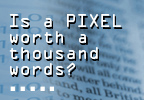



From personal experience, I understand the frustration that can arise attempting to compose scholarly work in a less familiar or less frequently utilized medium. I suspect that these frustrations, the lack of conventions regarding the new media composition process, and the inherent uncertainties about how such a work will be evaluated predispose graduate students to avoid composing new-media-based scholarship. Based on personal experience and informal discussions with peers, I know that fluency in those new media or the use of digital composition tools does not guarantee that a graduate student will avail himself or herself of the option to compose something other than the traditional paper-based argument. Further, I have found little thus far that examines how graduate students decide whether or not to engage in the new media composition process.
Given this perceived gap, I will examine the following research questions:
At this stage of the research, a “new media” project will be defined as an argument that integrates multiple modalities digitally or one that uses digital tools commonly associated with new media composition regardless of multimodality. The definition of new media scholarship is still contested, but multimodality seems to surface as a necessary condition. However, understanding that multimodality is difficult to achieve without the use of specific digital tools, I have expanded my definition to include the use of software such as Photoshop, Dreamweaver, iMovie, Audacity and other programs commonly associated with new media composition regardless of whether a multimodal use is specified. Given that multimodality can be achieved when the software is used effectively, I also included assignments requiring PowerPoint as “new media.”
Introduction • Essential questions • Methodological overview • Home